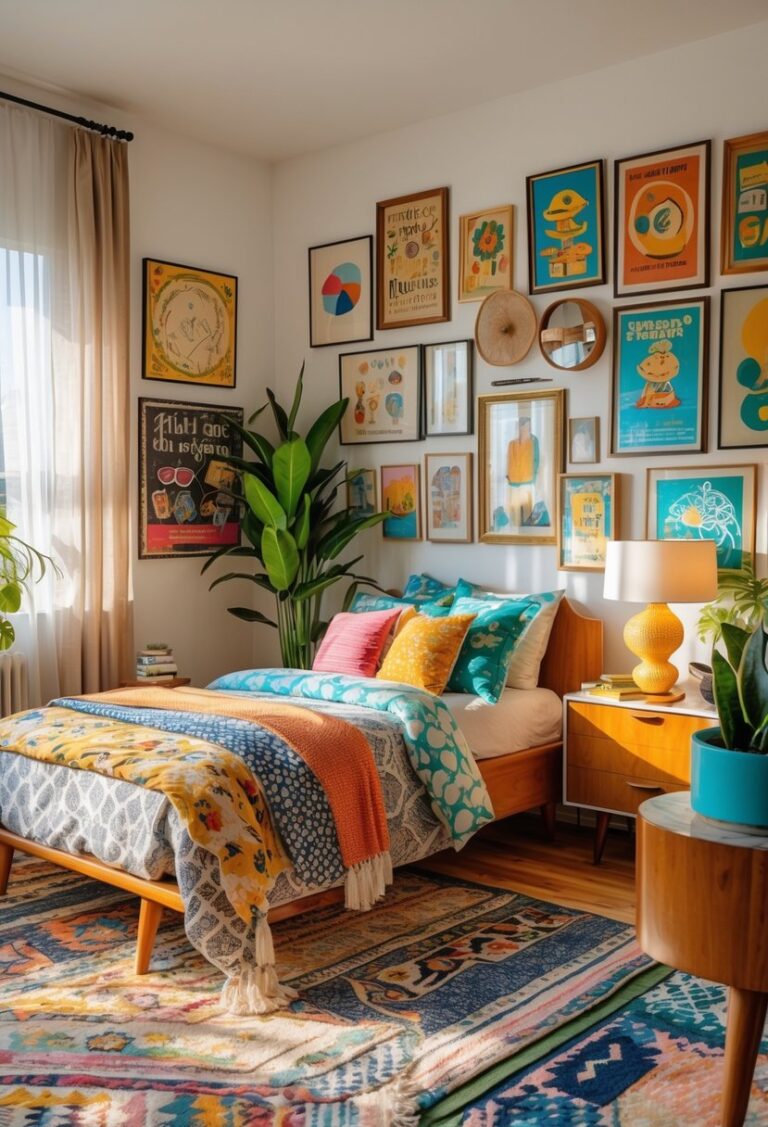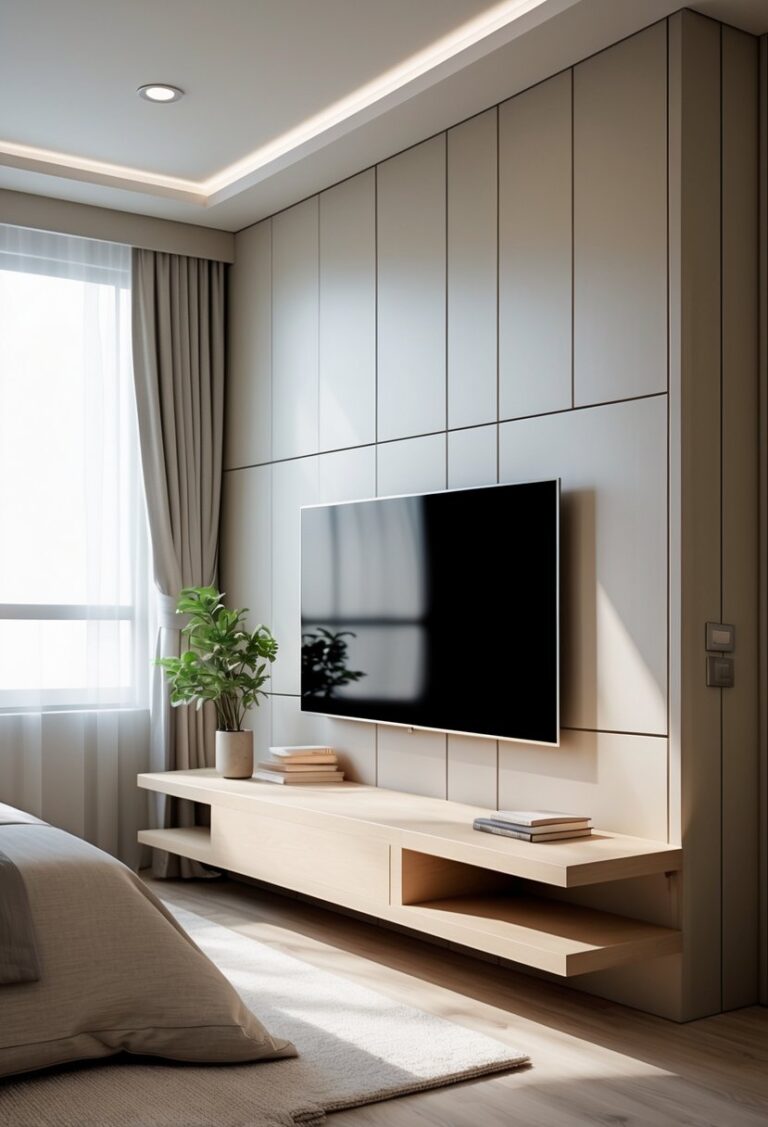30 Bedroom Color Schemes to Transform Your Space with Style and Harmony
Choosing the right colors for a bedroom can change the entire feel of the space. Different color schemes can create calm, energy, warmth, or freshness depending on what someone wants to achieve. The right color scheme helps make the bedroom a comfortable and inviting place to relax and recharge.
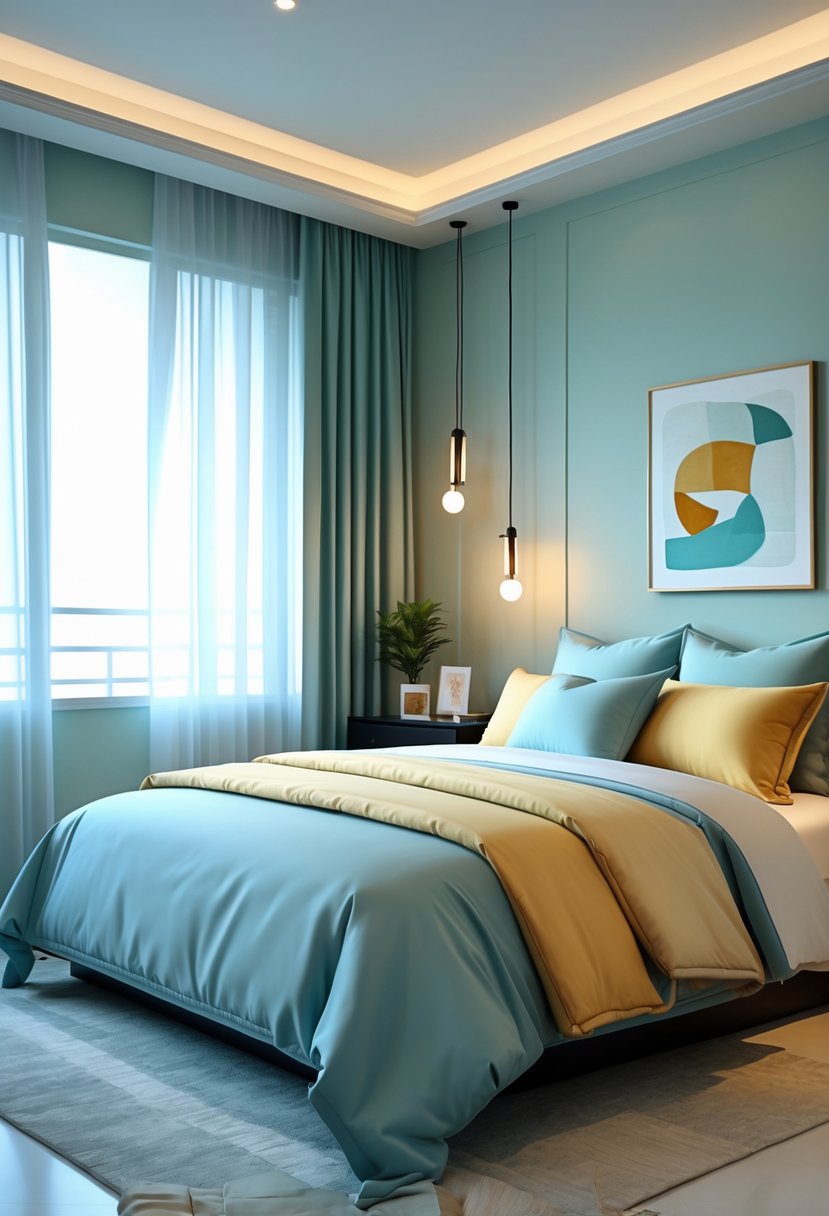
This article explores 30 bedroom color schemes that offer a range of styles and moods. It helps readers find inspiration to update their rooms with colors that suit their taste and lifestyle.
1) Sky Blue and Crisp White Modern Monochrome
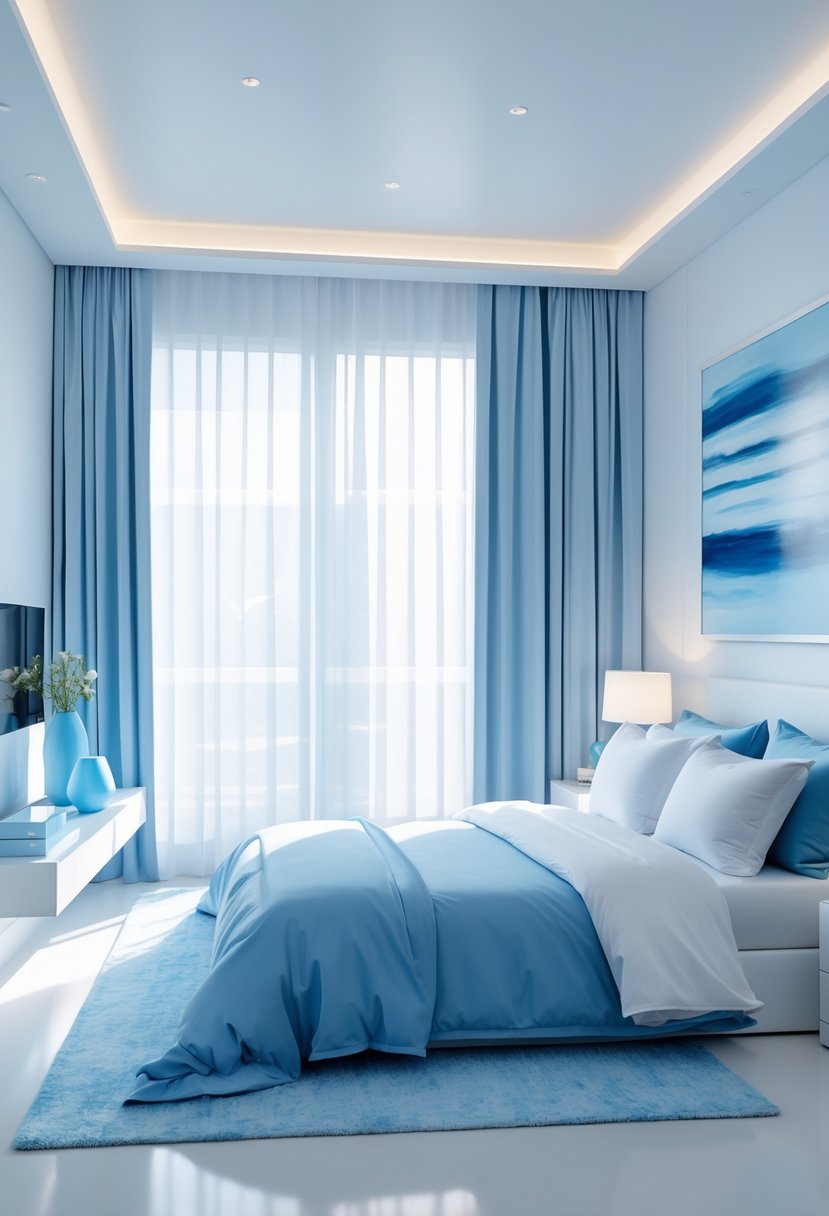
This color scheme uses soft sky blue walls paired with clean white furniture and accessories. It creates a calm and refreshing space that feels open and airy.
The combination works well in modern bedrooms by keeping the look simple and cohesive. Adding different shades of blue through decor keeps the room balanced without feeling flat.
Using crisp white alongside sky blue enhances natural light, making small rooms appear larger and more inviting. This approach suits those who prefer a peaceful, uncluttered design source.
2) Teal and Green Accents for Depth
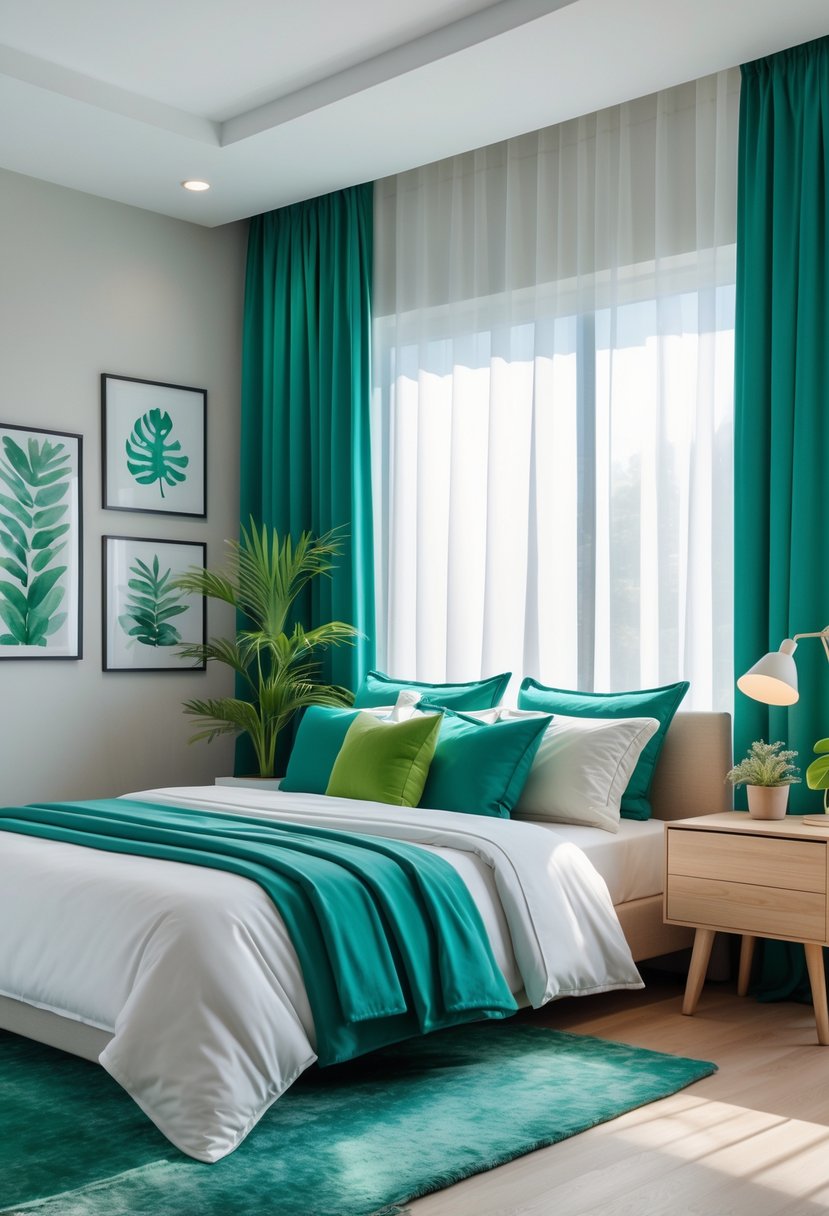
Using teal with green accents adds depth to a bedroom’s color scheme. The mix brings a natural, calming effect without feeling flat.
Teal walls paired with subtle green details create visual interest. This combination works well in both modern and traditional styles.
Balancing bold teal with muted green tones helps avoid overwhelming the space. It keeps the room feeling fresh and inviting. For more ideas, see teal bedroom color schemes with green accents.
3) Cream, Rust, and Green for Calmness
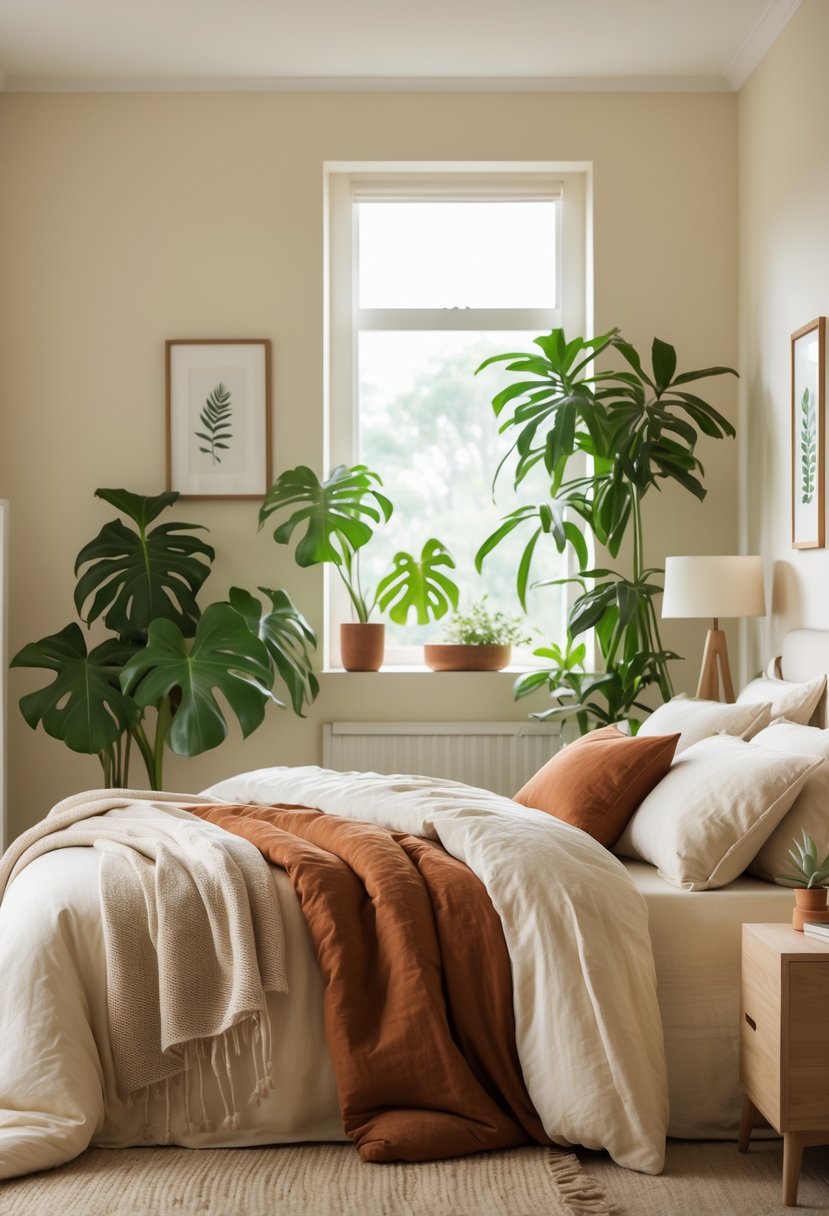
This color scheme combines soft cream tones with warm rust and natural green shades. The cream provides a neutral, soothing base that brightens the room.
Rust adds warmth without being too bold, creating a cozy feel. Green introduces a calm, earthy element that balances the warm tones.
Together, these colors create a peaceful and inviting bedroom. Using lighter shades helps keep the space open and relaxing. This trio works well for those who want a calm retreat with a touch of color.
For more ideas on calm green and cream palettes, see green and cream bedroom ideas.
4) Benjamin Moore Dragonfly for Nature-Inspired
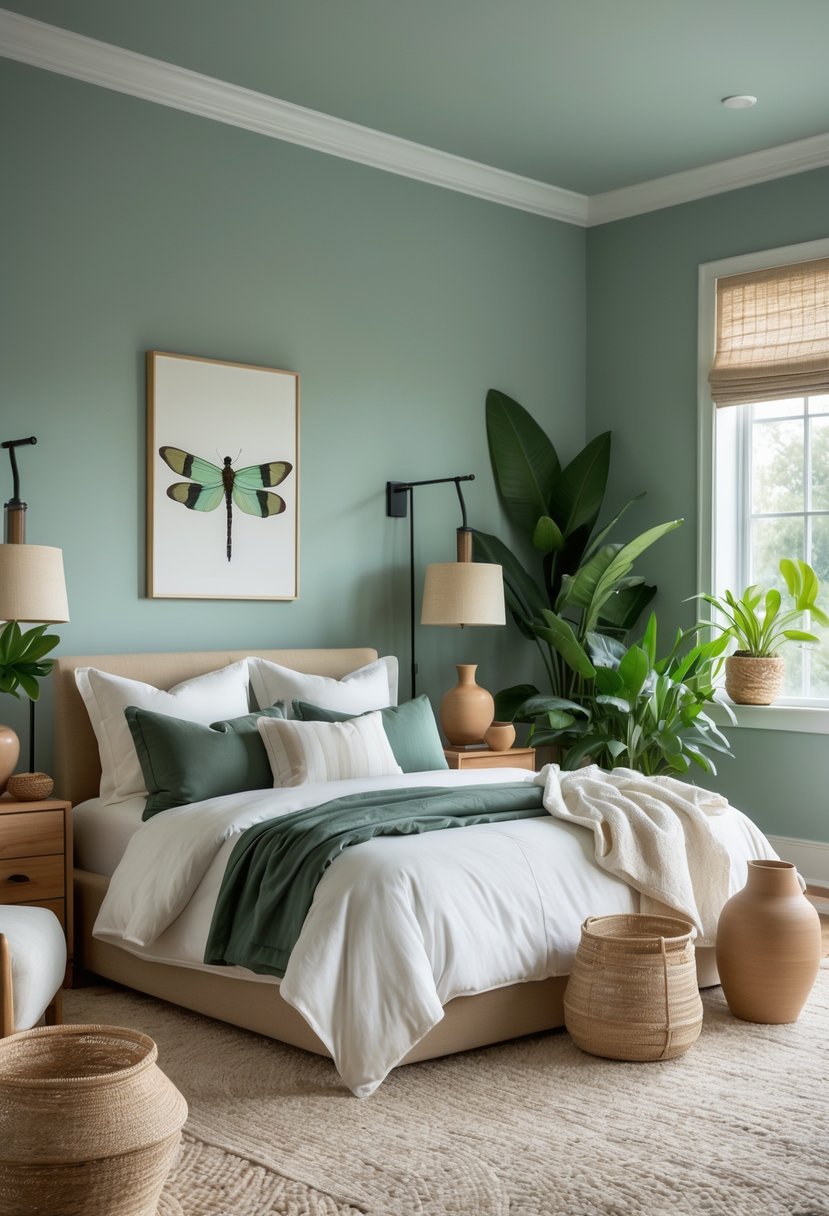
Benjamin Moore Dragonfly is a deep blue-green that brings a calm, natural feel to a bedroom. Its cool tones with hints of gray make it suitable for a restful space.
This color pairs well with warm neutrals like soft grays and beige to create a balanced, nature-inspired look. It can also be combined with darker shades like navy for added depth.
Dragonfly’s subtle mix of colors reflects natural elements, making it a good choice for those who want a peaceful, grounded bedroom. See more about Benjamin Moore Dragonfly here.
5) Soft Pastels for Serene Tranquility
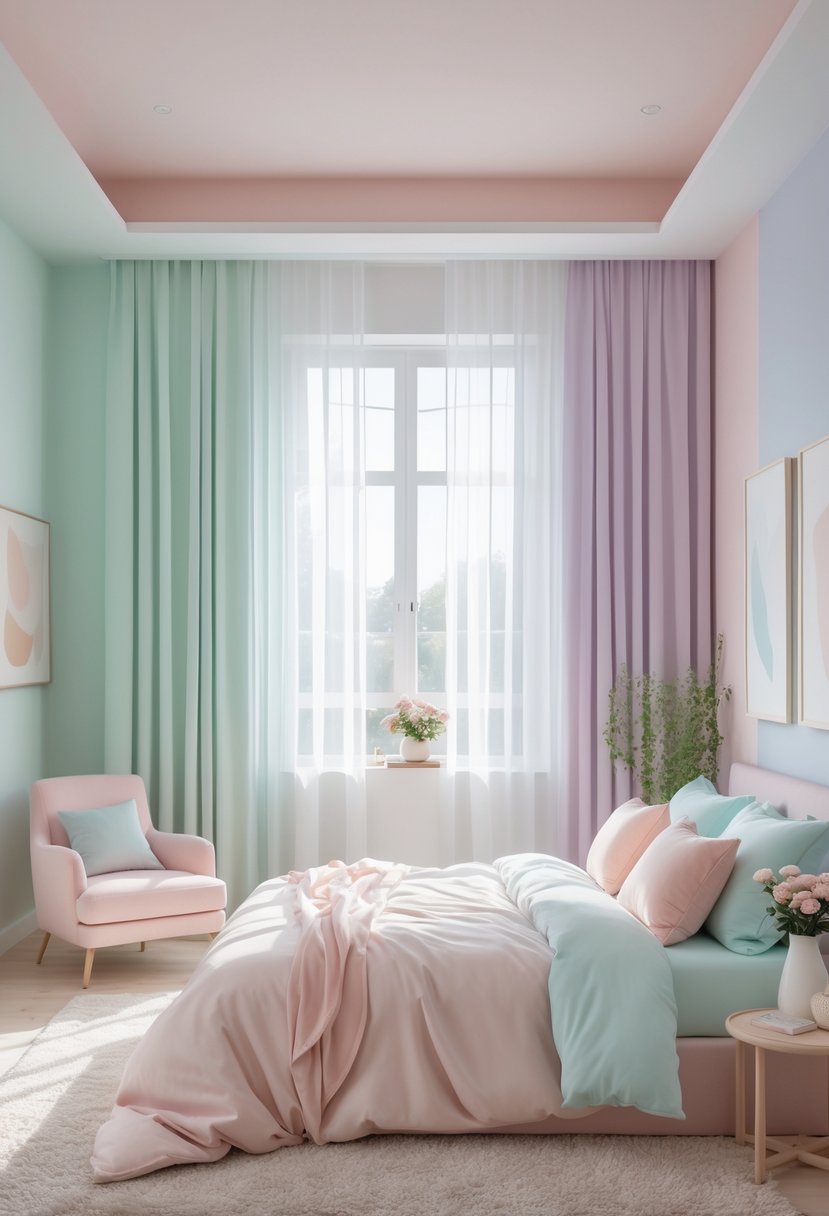
Soft pastel colors create a calm and peaceful atmosphere in the bedroom. Shades like mint green, pale pink, and muted blue help reduce stress and promote relaxation.
These colors work well with light neutral tones to keep the space feeling open and fresh. Pastel hues bring a gentle warmth without overwhelming the senses, making them ideal for restful rooms. For more ideas, see pastel bedroom color schemes for a soft touch.
6) Warm Neutrals: Beige, White, Light Gray
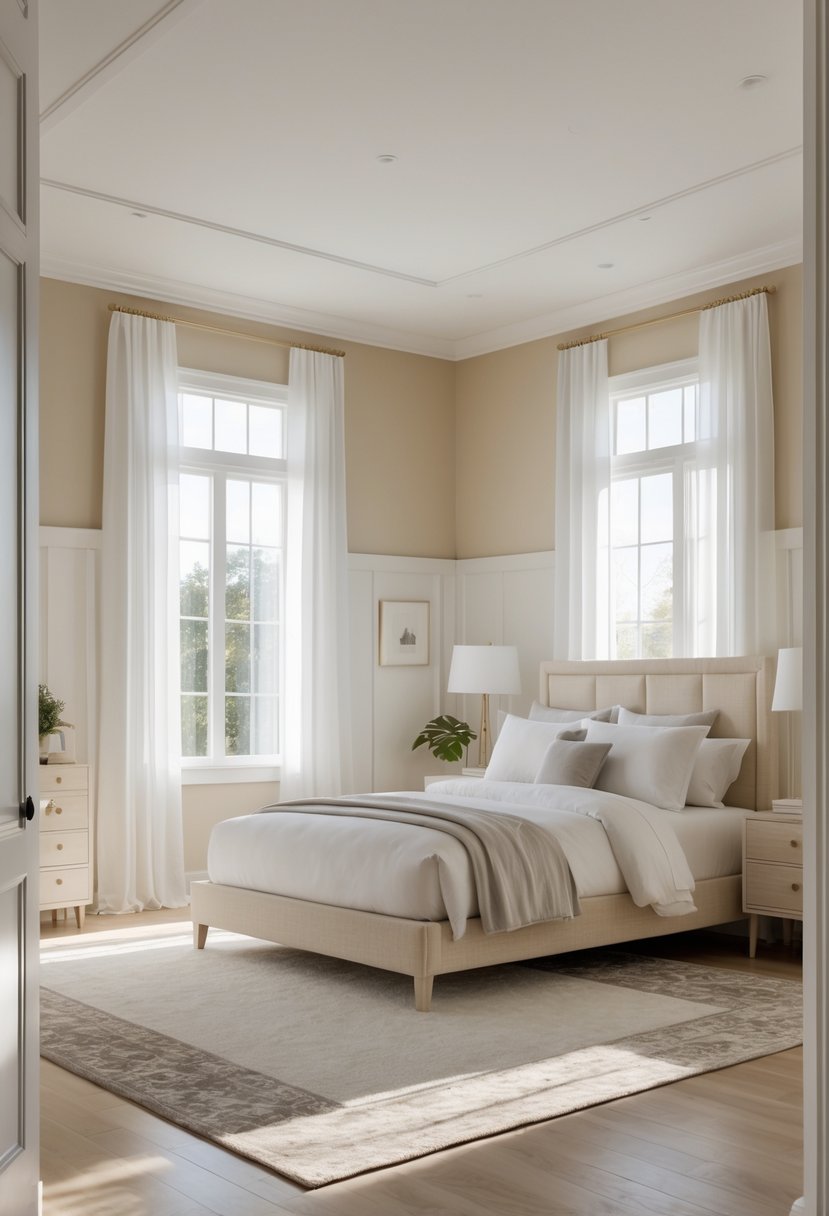
Warm neutrals like beige, white, and light gray create a calm and inviting bedroom. These colors offer a soft, balanced look that works well with many styles.
Beige shades with gray undertones, like Sherwin-Williams Accessible Beige, blend well with both warm and cool accents. Soft whites can add brightness without feeling cold.
Light gray with taupe undertones gives depth while keeping the space warm. These tones are perfect for layering textures and creating a peaceful retreat. See warm neutral examples at housekeepingbay.com.
7) Bold Red and Orange Warm Paints
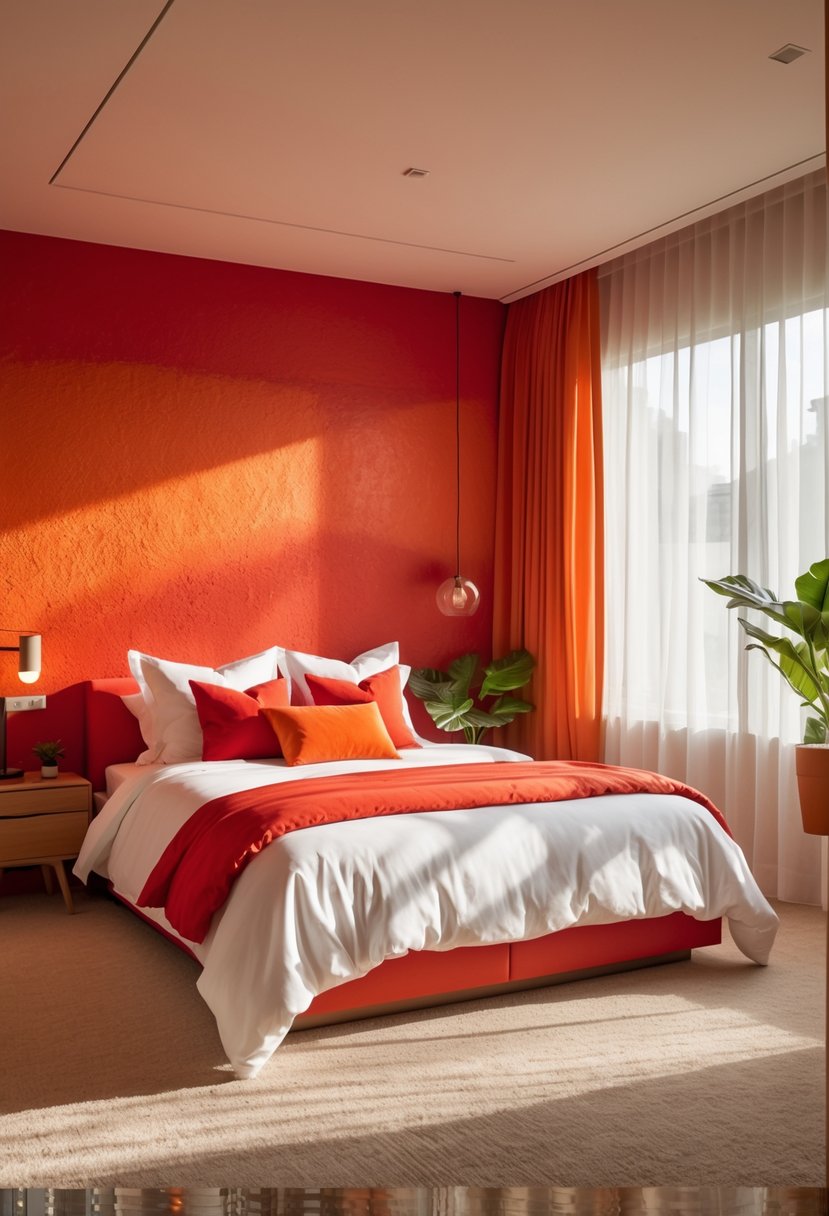
Bold red and orange paints bring warmth and energy to a bedroom. These colors create a lively and inviting atmosphere.
They are great for those who want a vibrant and inspiring space. Red can feel cozy when paired with softer tones. Orange adds a cheerful and bright touch.
Using these warm paints carefully can balance intensity with comfort. For ideas on combining these colors, see bedroom color scheme inspirations.
8) Pink Gradient for Vibrant Children’s Rooms
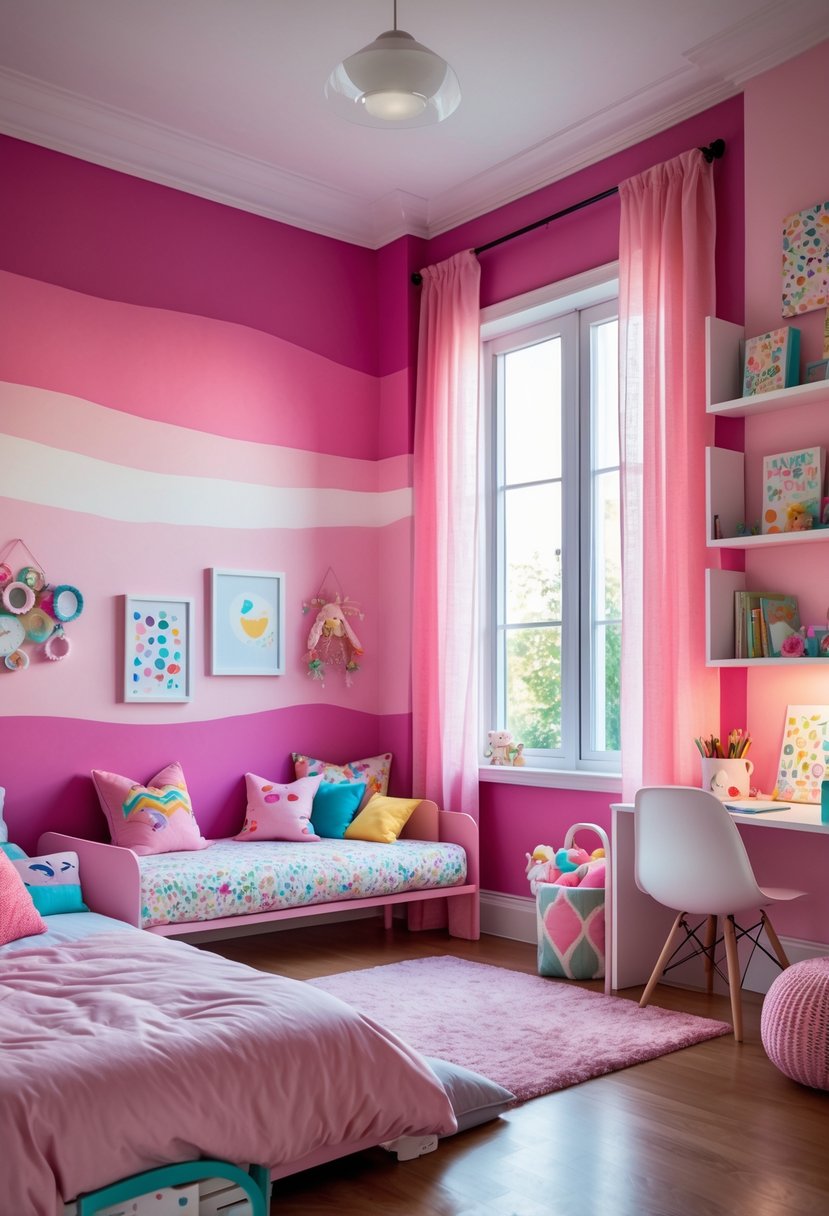
A pink gradient uses different shades of pink that blend smoothly from light to dark. This creates a lively and cheerful space that feels warm and inviting.
It works well for children’s rooms because it adds energy without being overwhelming. Combining soft baby pinks with brighter bubblegum tones can balance calm and playfulness.
Adding simple patterns or wall stripes can enhance the effect. This approach encourages creativity and positivity in a child’s personal space, making it both fun and cozy.
More ideas on using pink in kids’ rooms can be found at HGTV’s pink kids’ room ideas.
9) Gentle Grays with Pewter and Touch of Grey
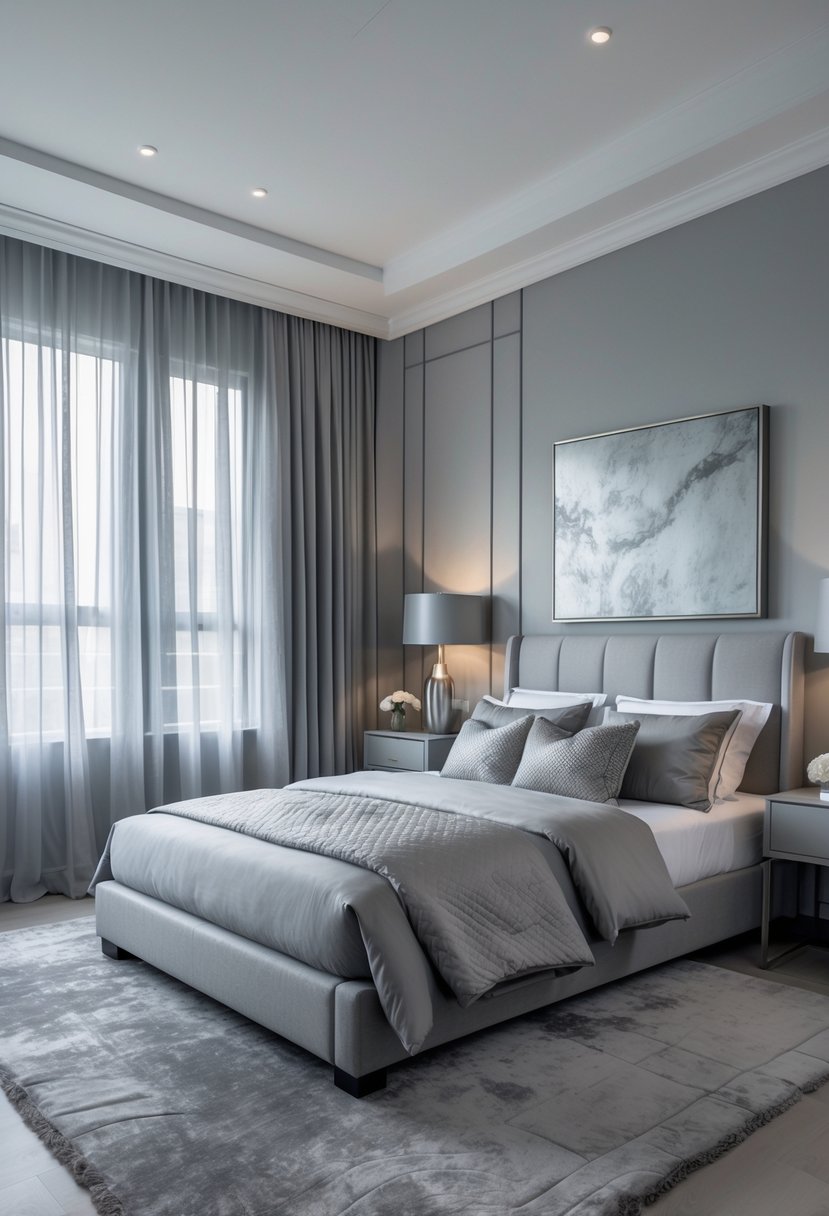
This color scheme blends soft gray walls with pewter accents for a calm, balanced look. Pewter adds a subtle metallic shine that keeps the space from feeling flat.
A touch of darker gray in fabrics or decor helps create depth without overwhelming the room. This palette works well with natural light and simple furnishings to maintain a clean, serene atmosphere.
For ideas on gray tones and combinations, see elegant gray bedroom ideas.
10) Cool Blue Shades for Relaxing Atmosphere
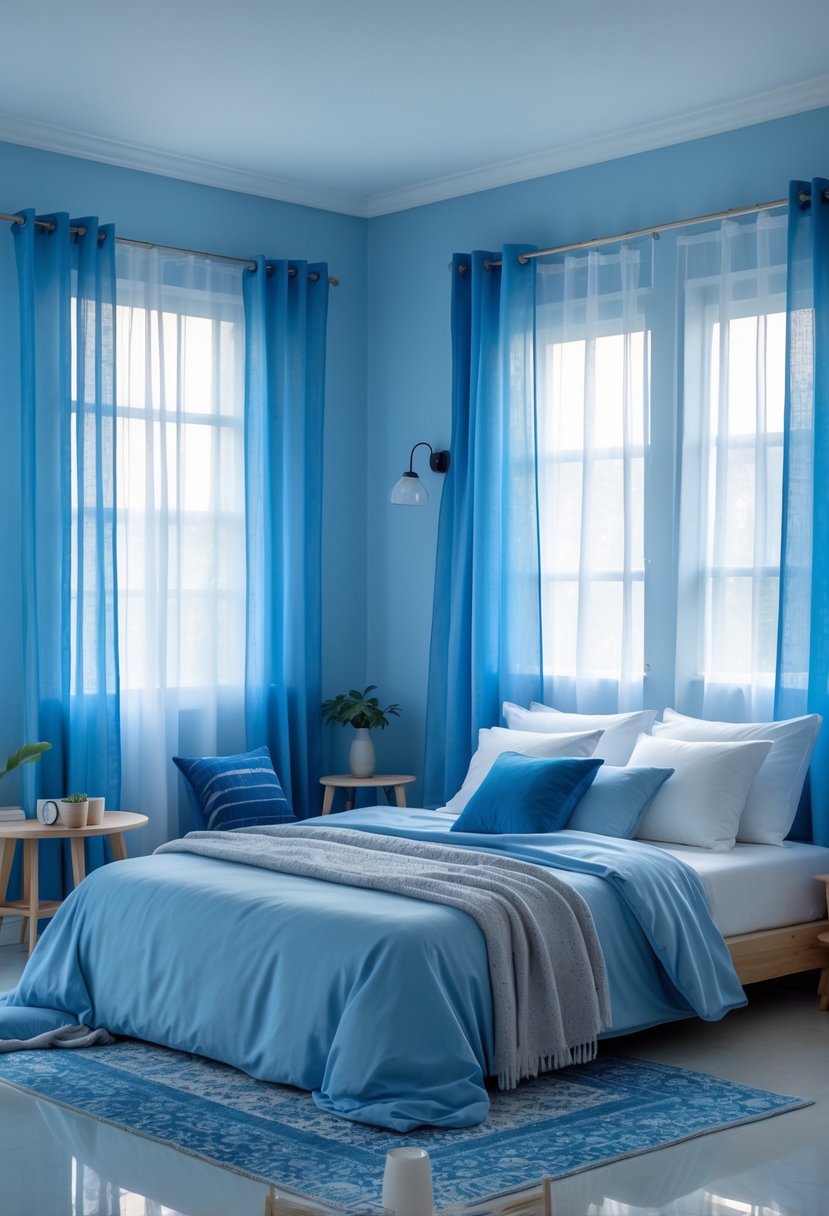
Cool blue shades create a calm and peaceful bedroom environment. Light blue tones reflect light well, making the space feel open and airy.
These colors work best when paired with natural materials like wood or linen. They help build a soothing atmosphere without being too bright or dark.
Using cool blues in walls, bedding, or curtains supports relaxation and rest. For more ideas on blue bedrooms, see blue bedroom color schemes for a personal oasis.
Understanding Bedroom Color Psychology
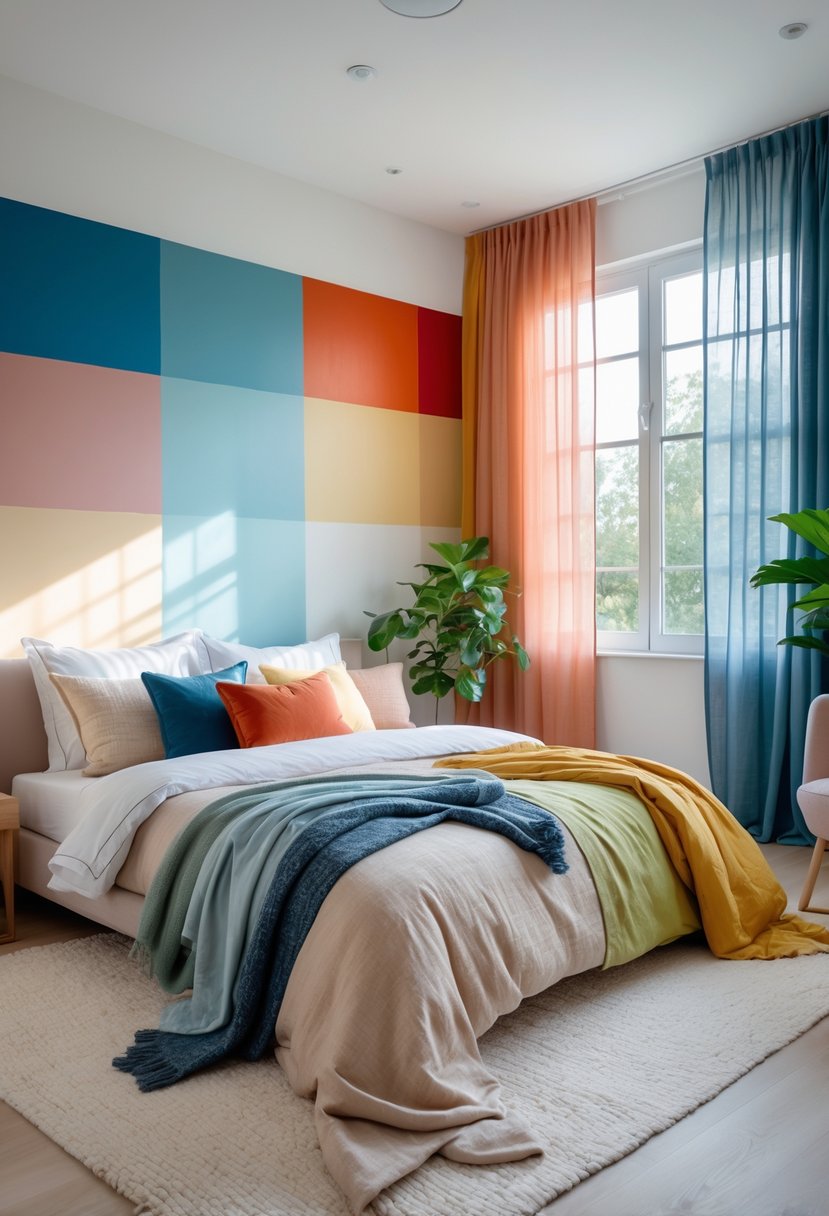
Bedroom colors affect how people feel and sleep. Some colors help calm the mind, while others can boost energy or create a cozy space. The right color choices can improve sleep quality and match different moods for relaxation or comfort.
Impact of Colors on Sleep Quality
Colors can either help people relax or make it harder to fall asleep. Soft colors like blue and green are known to lower heart rate and ease anxiety. These calm shades make it easier for the brain to prepare for rest.
Bright colors such as red or orange increase alertness and adrenaline, which can interrupt sleep cycles. Dark colors like black or deep charcoal might feel heavy or cramped if used too much, causing discomfort rather than calm.
To balance a bedroom’s color, designers often use the 60-30-10 rule: 60% dominant calm color (walls), 30% softer secondary colors (curtains or bedding), and 10% accent colors for small decor items. This mix can promote better sleep without feeling boring.
Choosing Colors for Different Moods
Different colors create specific feelings in a bedroom. Blue shades promote calmness and reduce stress, making them ideal for anxious sleepers. Green is gentle and refreshing, inspired by nature’s calming effect.
Warm colors like red and orange add warmth and intimacy but are better for small doses because they raise energy. Neutral colors like beige, soft gray, or warm whites form a relaxing base and work well with accent colors to change the mood easily.
Some colors to avoid in a bedroom are neon shades and bold yellow, as they tend to overstimulate the mind. Instead, subtle tones and balanced color use create a comfortable space fit for rest and relaxation. For more details, try color selections based on color psychology for bedrooms.
Tips for Coordinating Bedroom Color Schemes
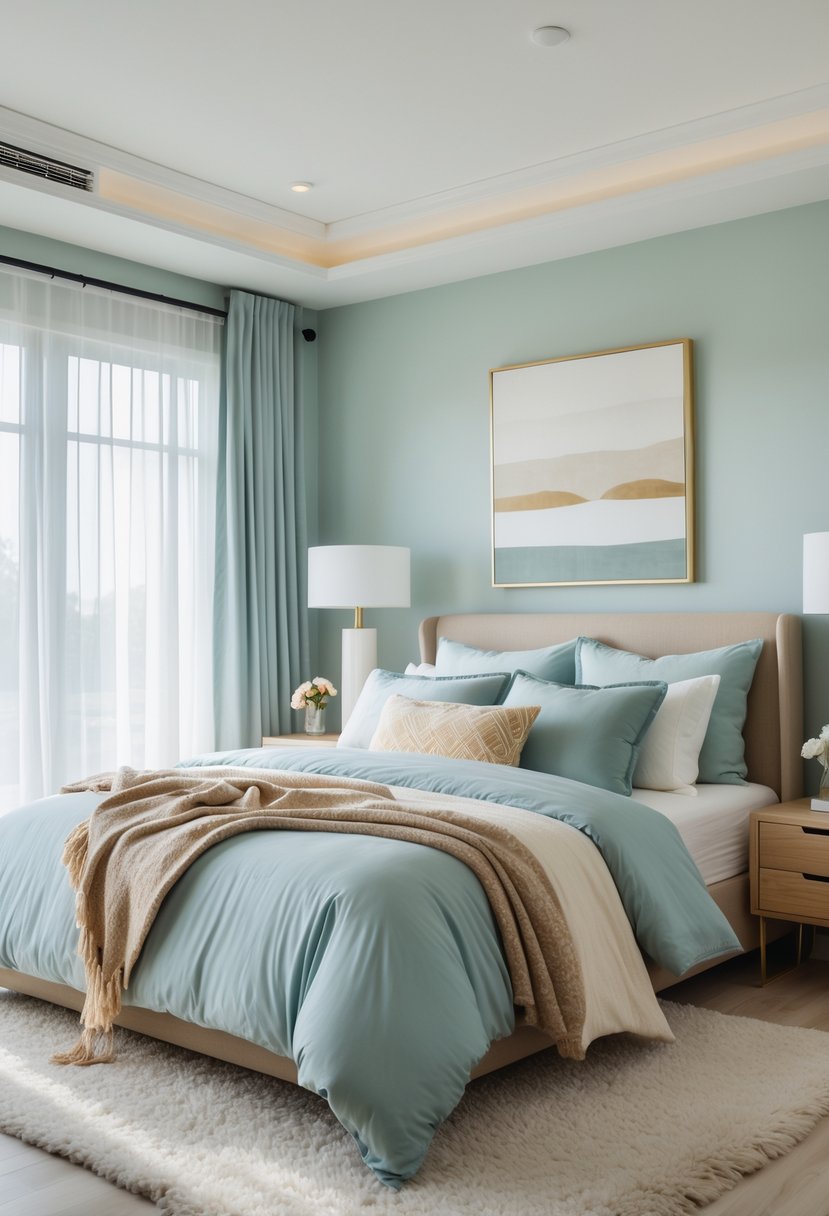
Choosing colors that work well together creates harmony and balance in a bedroom. It often means combining strong colors with softer lighting or adding texture to make the space feel complete.
Balancing Bold and Neutral Colors
Working with bold colors like deep reds or dark blues is easier when paired with neutral tones such as white, beige, or gray. Neutrals provide a quiet backdrop that helps bold colors stand out without overwhelming the room.
Using neutral walls and large furniture pieces allows bold accents, such as pillows or artwork, to become focal points. This method keeps the space interesting but calm.
A good rule is to let bold colors cover about 20-30% of the room while the rest stays in calming neutrals. This balance prevents the room from feeling too busy or too dull.
Incorporating Textures and Layering
Texture adds depth and comfort to a bedroom’s color scheme. Mixing soft fabrics, like velvet blankets, with harder surfaces, such as wood or metal furniture, creates visual interest.
Layering different textures in the same color family helps prevent the scheme from looking flat. For example, pairing a chunky knit throw with smooth sheets in the same tone gives the eye more to explore.
Using rugs, curtains, and pillows is an easy way to introduce textures. These elements also make the room feel more inviting without changing the basic color scheme.
For more detailed ideas, see 31 Bedroom Color Schemes To Create A Relaxing And Cozy Space.
Frequently Asked Questions
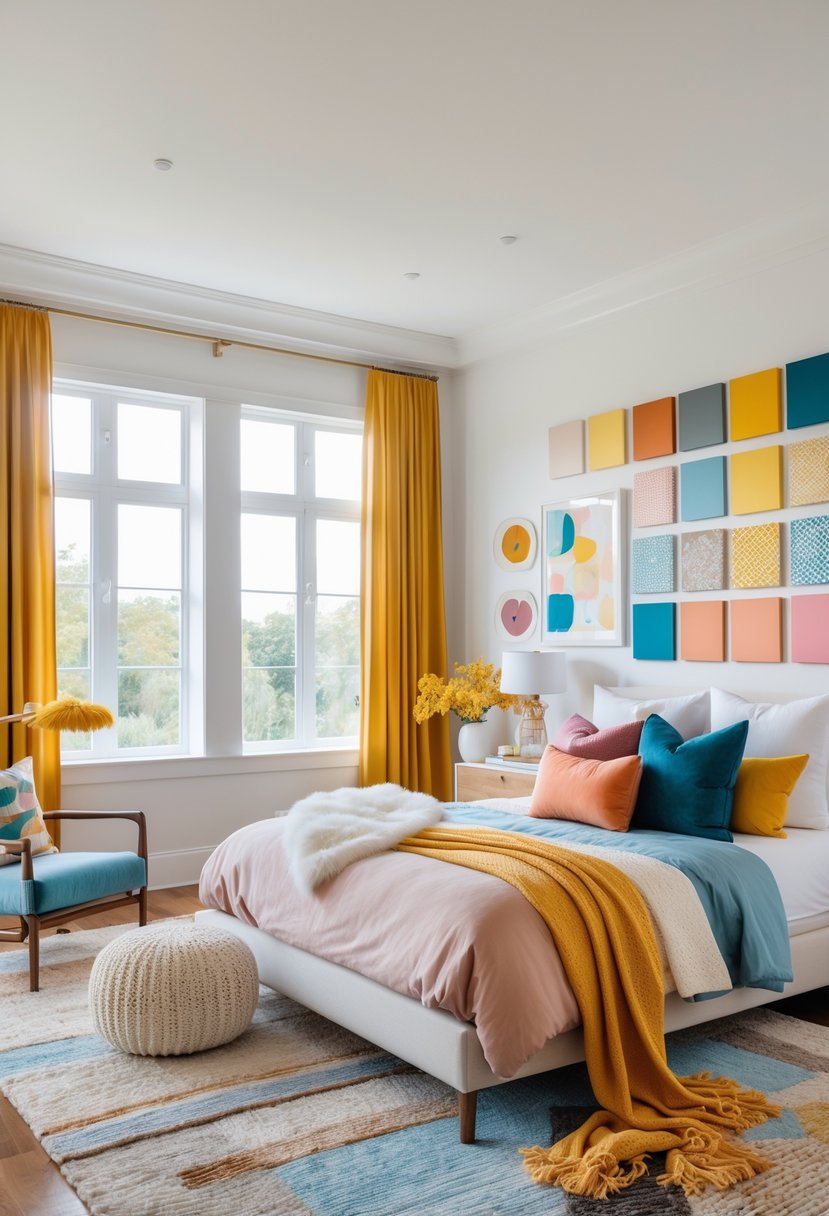
Choosing the right colors can balance mood, style, and comfort. Many find success using cool tones mixed with neutrals or combining soft pastels with deeper hues. Tools and trends help refine these choices to match personal taste and room function.
What are the best two colour combinations for bedroom walls?
Sky blue paired with crisp white creates a modern and clean look. Teal combined with green accents adds depth and a natural feel. These pairs work well to keep the room calm but visually interesting.
How can one utilize a bedroom color palette generator effectively?
A color palette generator helps by suggesting matching colors based on an initial choice. It can show possible wall colors, trim shades, and accent tones, making it easier to visualize a balanced scheme before buying paint or decor.
Which colors are currently in the top 10 for bedroom design?
Soft pastels, cream, rust, various shades of green, teal, sky blue, and tones inspired by nature like Benjamin Moore Dragonfly are among the leading picks. These colors suit different styles, from calm retreats to more vibrant spaces.
What are some modern bedroom color schemes?
Modern schemes often mix monochrome styles, like sky blue with white, or draw from nature with cream, rust, and green. Using bold yet muted tones for accents keeps the room feeling fresh without overwhelming the senses.
How do I choose the best color for bedroom walls to create a calming atmosphere?
Colors like soft pastels or nature-inspired greens help promote peace and relaxation. It helps to pick shades with cool undertones and balance them with neutral colors for a calming effect that supports restful sleep.
Could you suggest some colorful bedroom ideas suitable for adults?
Combining teal and green accents provides a rich, mature palette. Adding muted rust or cream tones can balance the vibrancy, making the space lively but still cozy and grown-up.


